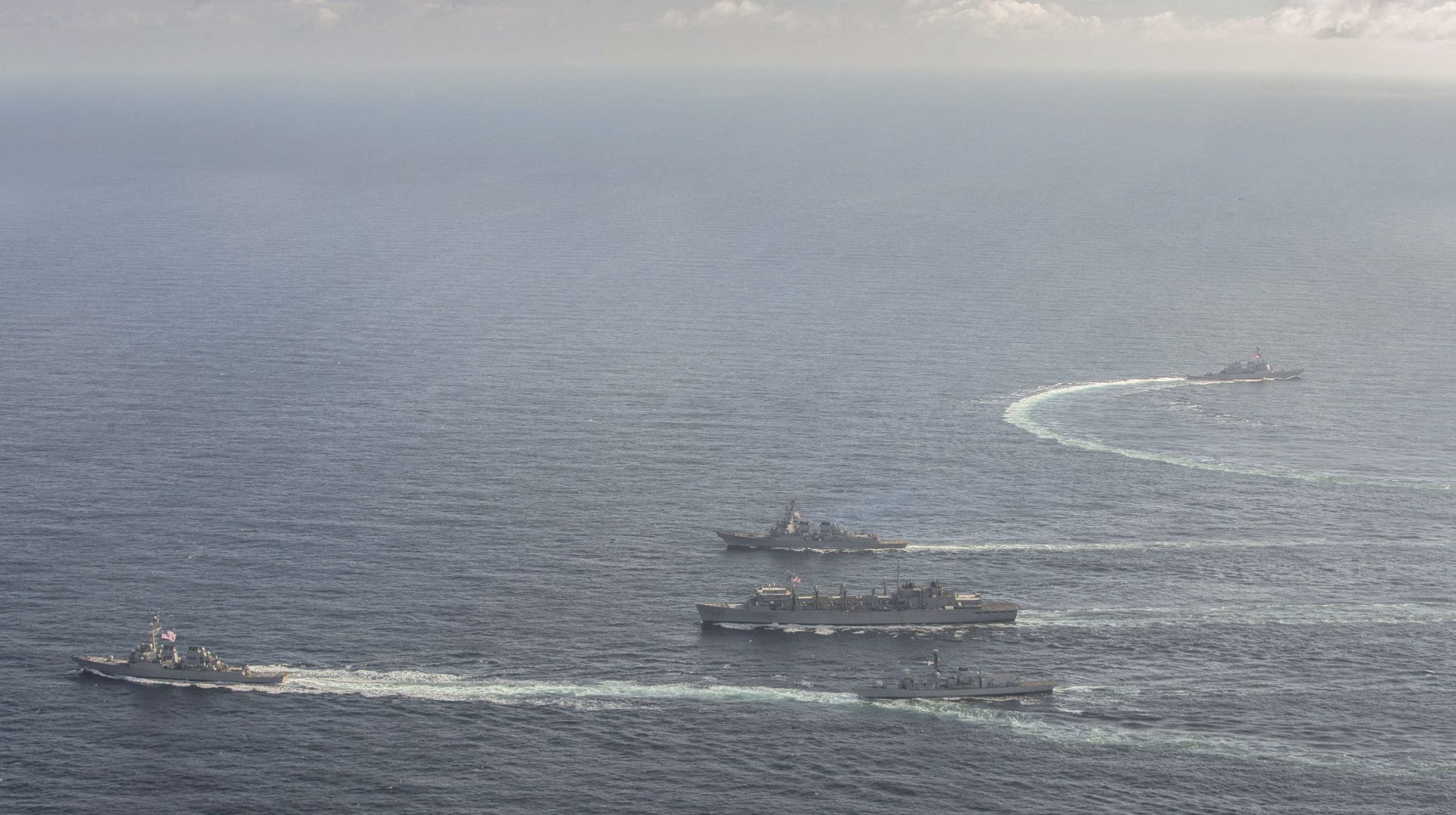
A U.S. and British exercise underway in the Barents Sea highlights the importance of the Arctic region in a time of climate change.
“Three Arleigh Burke-class Aegis destroyers — USS Donald Cook, USS Porter and USS Roosevelt — are supported by fast combat support ship USNS Supply and joined by the Royal Navy’s HMS Kent to assert freedom of navigation and demonstrate seamless integration among allies,” a U.S. Navy news release said.
This is the first U.S. exercise in the Barents Sea since the mid-1990s, Navy officials said.
Climate change is affecting every country on the globe, and the U.S. military must adapt to provide defense, officials said. Whether it is increasingly dangerous floods, longer-lasting droughts, more and more powerful hurricanes, typhoons or cyclones, service members must change to operate and win in these new environments, they added.
Climate change is particularly fast in the colder regions of the globe, with glaciers and ice caps melting at alarming levels. That change means new operational environments.
For centuries, explorers looked for the fabled Northwest Passage from Europe across the top of North America to the Pacific. The straits and islands and bays still bear the names of Hudson, Frobisher, Ellesmere and Cook. Many explorers died looking for the water passage, but the Arctic ice cap was too large. It wasn’t until the early 20th century that Norwegian explorer Roald Amundsen, the first man to reach the South Pole, navigated a small boat from the Pacific to the Atlantic.
But climate change has opened that possibility. The Arctic ice cap is shrinking, and there is the possibility that a route may open for at least part of the year. The Arctic region above Russia is seeing the same warming trend.
The first commercial ship to transit the Northwest Passage was the SS Manhattan in 1969. The ship — refitted with an icebreaker bow — was an oil tanker testing to see if the route would work for carrying Alaskan crude out of Point Barrow.
But ships without special fittings can now transit the passage. In 2016, the passenger liner Crystal Serenity sailed from Vancouver, British Columbia, to New York City using the route. It took 28 days.
In 2013, the first commercial bulk carrier transited the passage. The MS Nordic Orion carried a cargo of coking coal from Vancouver to the Finnish port of Pori.
All this presents new geostrategic challenges, said Navy Adm. James Foggo, the commander of U.S. Naval Forces in Europe and the commander of NATO’s Allied Joint Force Command in Naples, Italy.
“The High North is attracting global interest, with abundant natural resources and opening maritime routes,” Foggo said in an article in Defense One.
Russia — with its long coastline on the Arctic Ocean — is aggressively seeking to assert its preeminence in the region. The Russians recently unveiled a new icebreaker, the Ivan Papanin, that can carry Kalibr cruise missiles. “Who puts missiles on icebreakers?” Foggo asked.
Russia is also deploying surface ships and new hybrid Kilo-class submarines. “We’re seeing the Russians deploy more submarines in the North Atlantic, and these subs are deploying for longer periods of time and with more lethal weapon systems,” the admiral said.
The Soviets had outposts all along its Arctic coast. These were abandoned following the dissolution of the Soviet Union. But Russia has returned to Soviet-era outposts and built new military facilities above the Arctic Circle.
Russia at least borders on the Arctic Ocean. China calls itself “a near-Arctic nation” and seeks to assert its rights in the region. The Chinese are calling for freedom of navigation in the Arctic, even as they try to suppress that right in the South China Sea.
There will be more deployments and more exercises in the High North, Foggo said. “The Russians are operating with state-of-the-art nuclear submarines,” he said. “That said, we still have the competitive advantage. But they’re good, and getting better.”
from Defense News by DefenceTalk.com https://ift.tt/3fu1pee
via Defense News

No comments: